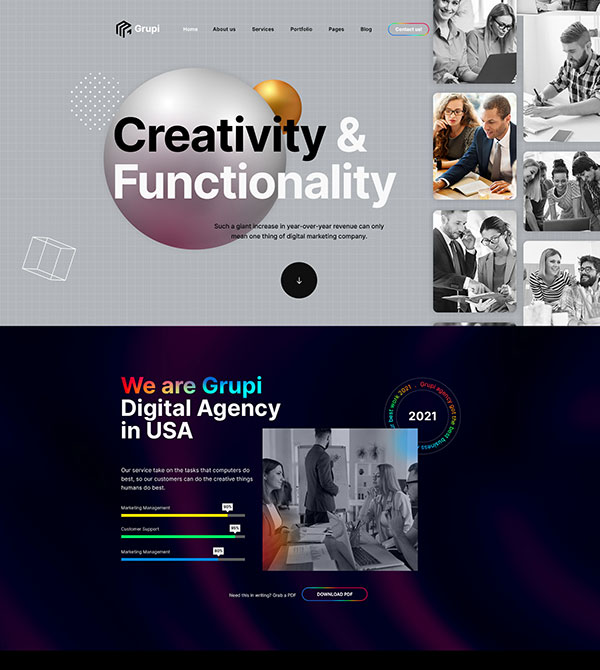Building upon The Power of Symbols: From Temples to Modern Games, it becomes evident that symbols have long been central to human culture, serving as powerful tools to communicate values, beliefs, and identities across ages. As societies evolved from sacred temples and ritualistic emblems to digital environments, the function and significance of symbols transformed dramatically. This article explores how ancient symbols laid the groundwork for today’s digital representations and how they continue to shape individual and collective identities in the modern digital realm.
Table of Contents
- The Transition of Symbols: From Physical to Digital Realms
- Digital Symbols as Identity Markers
- Psychological and Social Dynamics of Digital Symbols
- The Power of Symbols in Digital Narratives and Memes
- Ethical and Political Dimensions of Digital Symbols
- Future Trends: Evolving Symbols and the Digital Self
- Bridging Back to the Power of Symbols: From Temples to Modern Games
The Transition of Symbols: From Physical to Digital Realms
Historically, physical symbols such as temples, ritual objects, emblems, and sacred icons served as tangible representations of spiritual, cultural, and social values. These symbols functioned as a language accessible to all members of a community, reinforcing shared beliefs and societal cohesion. For instance, ancient Egyptian hieroglyphs combined visual imagery and symbolic meaning to communicate religious and political messages across generations.
With the advent of technological progress, especially from the 20th century onward, these physical symbols found new expression in digital formats. The development of electronic displays, computer graphics, and internet technologies enabled symbols to transcend physical limitations, allowing for rapid, global communication. Emblems and logos transitioned into digital icons, emojis, and avatars, establishing a new visual vocabulary for online interaction. As Dr. Jane Smith’s research highlights, the digital realm has created a “symbolic ecosystem” where image-based communication often surpasses textual language in conveying identity and intent.
This evolution underscores a crucial point: technological advancements have not replaced the symbolic importance of physical artifacts but have recontextualized them, making symbols more accessible and adaptable in the digital age. The transformation from physical to digital symbols is, therefore, a continuum rooted in humanity’s innate reliance on visual and conceptual signs to forge connections.
Digital Symbols as Identity Markers
In today’s digital landscape, symbols such as emojis, avatars, and digital logos serve as immediate markers of personality, group affiliation, and cultural identity. These symbols are not merely decorative; they encode complex layers of meaning that allow individuals to express themselves efficiently in online spaces. For example, emojis like the 🤝 or 🌍 communicate cooperation or global awareness, while personalized avatars can reflect a user’s aesthetic preferences or cultural background.
The semiotics of digital symbols involves decoding these visual cues within specific contexts. For instance, a thumbs-up emoji can signify approval, but in different cultures, it may carry varied connotations—highlighting the importance of contextual understanding in digital communication. Studies in digital semiotics reveal that users quickly learn to interpret symbols based on shared conventions, which facilitate social bonding and group cohesion even across language barriers.
Take the case of brands like Apple or Nike: their logos are simple yet powerful symbols that instantly communicate quality, innovation, and lifestyle. Similarly, online communities often craft unique symbols or memes—such as the iconic Doge or Pepe the Frog—to foster a sense of belonging and identity among members. These symbols act as digital badges, signaling membership and shared values within a community.
Psychological and Social Dynamics of Digital Symbols
Shared digital symbols contribute significantly to the formation of subcultures and online identities. For example, the gamer culture often uses specific symbols like game icons, faction logos, or meme references to delineate group boundaries and reinforce collective identity. These symbols foster social cohesion, enabling members to recognize allies and differentiate themselves from outsiders.
Research indicates that symbols influence online behavior by shaping perceived group membership and belonging. As Dr. Alan Johnson notes, “Digital symbols serve as social glue, creating a sense of community that transcends geographical boundaries.” They also impact virtual self-presentation, allowing users to curate their digital personas in ways that reflect their authentic selves or aspirational identities—often blurring the line between virtual and real-world authenticity.
For instance, the widespread use of profile badges or themed emojis in professional networks like LinkedIn can signal expertise or cultural affinity, reinforcing individual reputation and social cohesion within digital ecosystems.
The Power of Symbols in Digital Narratives and Memes
Memes epitomize modern myth-making, utilizing symbols to transmit humor, cultural values, and societal critiques. A prime example is the Distracted Boyfriend meme, which uses a simple stock photo to symbolize shifting attention and societal priorities. These symbols, when combined with text or context, create powerful narratives that resonate globally.
In storytelling, digital symbols help craft immersive worlds—think of the iconic Triforce from The Legend of Zelda or the Pokéball in Pokémon. Such symbols evoke nostalgia and deepen engagement, fostering a sense of shared universe among fans. These symbols also influence societal perceptions; viral images like the Black Lives Matter fist or rainbow flags symbolize broader social movements, rallying support and shaping public discourse.
Viral symbols act as catalysts for societal debates, often becoming focal points of cultural identity and political expression in the digital age.
Ethical and Political Dimensions of Digital Symbols
The manipulation and appropriation of symbols pose significant ethical challenges. For example, digital activism movements have sometimes co-opted symbols—such as the V for Vendetta mask or the rainbow flag—to serve political agendas. Conversely, misappropriation can distort meanings, leading to misinformation or cultural insensitivity.
Symbols also act as tools of inclusion or exclusion within online communities. A symbol like the QAnon insignia or specific hashtags can delineate in-group from out-group, shaping social boundaries and potentially fostering polarization. As digital environments grow more complex, the responsibility of designers and users becomes critical. They must ensure that symbols promote meaningful communication rather than manipulation or division.
In this context, ethical considerations encompass transparency, cultural sensitivity, and awareness of the power symbols hold in shaping societal narratives.
Future Trends: Evolving Symbols and the Digital Self
Emerging technologies like augmented reality (AR) and virtual reality (VR) are expanding the scope of digital symbols. In AR environments, symbols can be overlaid onto physical spaces, creating hybrid identities that blend the virtual with the real. For instance, AR filters on social media platforms like Instagram or Snapchat allow users to adopt unique symbols—masks, accessories, or animations—that shape their virtual personas dynamically.
Artificial intelligence (AI) is also poised to generate new symbols tailored to individual preferences or contexts, potentially redefining identity construction. AI-created avatars or icons can adapt in real-time, providing users with personalized symbolic expressions that enhance self-presentation and social interaction.
However, these advancements raise ethical questions concerning authenticity, privacy, and the potential for manipulation. As technology evolves, it is vital for designers and users alike to consider the implications, ensuring that new digital symbols foster genuine human connection rather than superficiality or deception.
Bridging Back to the Power of Symbols: From Temples to Modern Games
Reflecting on the continuum from ancient sacred symbols to contemporary digital icons reveals a shared human impulse: the desire to create meaningful representations that foster identity, community, and cultural continuity. Just as temples and rituals once served as physical symbols of faith and societal order, modern digital symbols—memes, emojis, avatars—serve as virtual equivalents, shaping our online interactions and self-perceptions.
Understanding the historical significance of symbols enriches our grasp of how they influence digital culture today. For example, the enduring power of symbols like the peace sign or rainbow flag demonstrates that foundational symbols retain their influence, adapting to new contexts and mediums.
As the parent article emphasizes, symbols are not static; they evolve yet preserve their core functions—bridging individual identity with collective meaning—and continue to shape our digital identities in profound ways.









